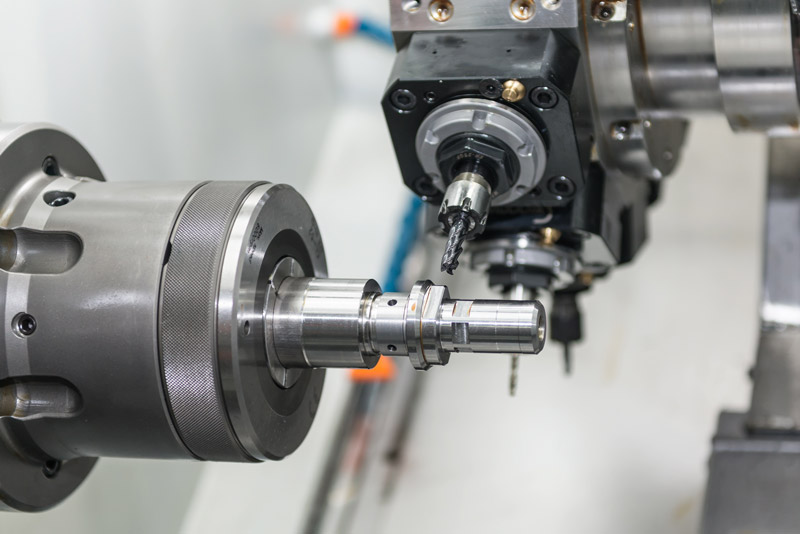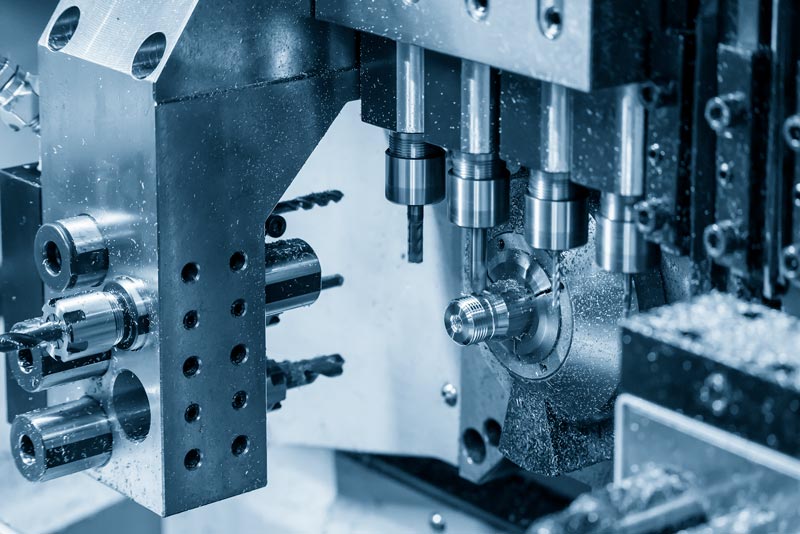CNC turning
Turning carried out with three and four-axis CNC machines with manual and robotised loading. For mass production, we have bar machines such as sliding headstocks, transfers and multi-spindle lathes.
During the CNC turning process, the metal bar is placed on the spindle of a numerically controlled lathe, while a special tool works to remove the material and create the desired shapes.
The lathe creates pieces through a subtractive process, also using driven tools.
Mecal srl has a series of 2, 3 and 4-axis CNC (computer numerical control) bar and recovery lathes, maximum dimensions 150mm x 700mm.
During the CNC turning process, the metal bar is placed on the spindle of a numerically controlled lathe, while a special tool works to remove the material and create the desired shapes.
The lathe creates pieces through a subtractive process, also using driven tools.
Mecal srl has a series of 2, 3 and 4-axis CNC (computer numerical control) bar and recovery lathes, maximum dimensions 150mm x 700mm.
Types of mechanical turning
Different machining operations can be obtained on the internal or external surface of the metal piece based on the spindle or cutting tool movement, but also on the position of the metal component to be machined.
The main turning operations on the internal surface are drilling, tapping and boring.
- Drilling: the process by which the cutting tool penetrates the piece creating a hole.
- Tapping: the operation used to create internal threading, performed after drilling thanks to the use of a tool called “tap”.
- Boring: a hole finishing process which has the advantage of being performed with the workpiece in motion and with the tool remaining stationary, thanks to the work of the lathe.
On the other hand, the main turning operations on the external surface are: grooving, shearing, threading and facing.
- Grooving: tool movement is radial with respect to the workpiece and is used to engrave limited depth and width grooves.
- Shearing: the operation with which a section of the workpiece is cut; it always takes place through radial tool movement.
- Threading: the tool moves to thread the workpiece in question.
- Facing: turning with which a thin surface layer of material is removed in order to obtain a perfectly flat, smooth and polished surface.
WHAT IS MECHANICAL TURNING?
Turning is a process based on the removal of chips. This process requires a rotary motion of the workpiece and, at the same time, a rectilinear motion of the cutting tool used for its definition. The machine tool used for this process is called a “lathe”. Machined parts can have different surface finishes.
WHAT IS MECHANICAL TURNING FOR?
Turning processes are essential in order to obtain particular workpieces on which it is necessary to intervene with precision work to model internal or external surfaces. The smallest components make reference to “turned metal parts”.


